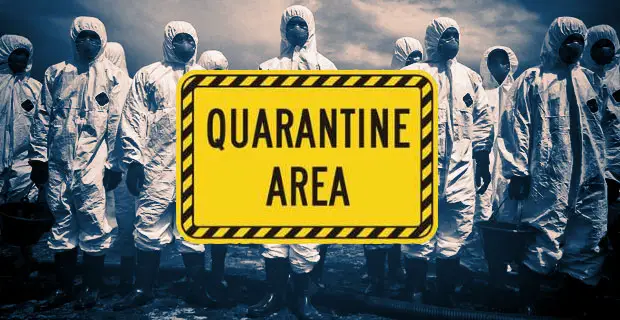Our first two numbers are four U.S. Hospitals with significant isolation units with 23 beds in those facilities. Our third number is that, conservatively, each Ebola victim was in contact with 80 people. Hold those numbers in mind.
Based on the Center for Disease Control’s reporting of the 75 health care workers that cared for the index patient 2 contracted Ebola; that’s a 2.7% infection rate for trained medical professionals in some form of protective gear that does not exist in the population in general.
The downside potential for the outbreak is in the geometric progressions.
We have, or had four cases; 4 patients times 80 potential contacts is 360 people; at the 2.7% infection rate that’s another 9 people bringing the current total to 12 living. Those 12 times another 80 contacts is 960, times the infection rate we now have, potentially, 26 new patients plus the prior 12; 38.
At this point we have 15 more patients than we have beds in isolation units. In just three iterations of the geometric progressions our high end treatment capacity has been exceeded by more than 50%!
The progression continues, 38 patients by 80 contacts each is 3,040, multiplied by the infection rate gives you nearly 100 infected patients based on the above stated assumptions. We are now attempting to track down, control and isolate 8,000 potential exposures. That 8,000 times the infection rate and we’re at 216 potential infections, times the contact assumption and the number is 17,280 possible infections. By this time one could make the assumption that the infection rate increases due to stress on the system and a lack of facilities. If at this point the infection rate goes to 5%, we have the potential for 864 cases and 69,120 people to keep track of. Those 69,100 times the new infection rate and we have 3,456 Ebola infected patients with 276,480 contacts.
In West Africa Ebola infections are expected to double every three weeks. 40% of all cases reported in West Africa, were reported in the last 21 days. The World Health Organization opines that new cases in West Africa could reach 10,000 per week. That represents the recognition that the geometric progression is, in fact, what is occurring in West Africa.
Add to our numbers the 150 West Africans arriving daily in the U.S. and a parallel pattern of geometric progressions reveals itself.
Cross-posted from You Decide Politics
